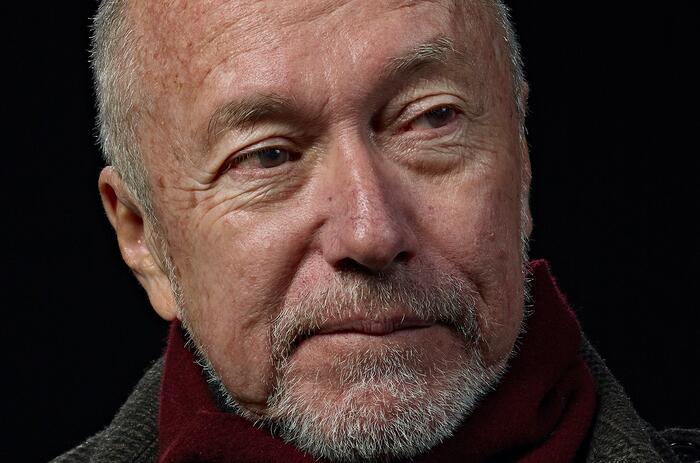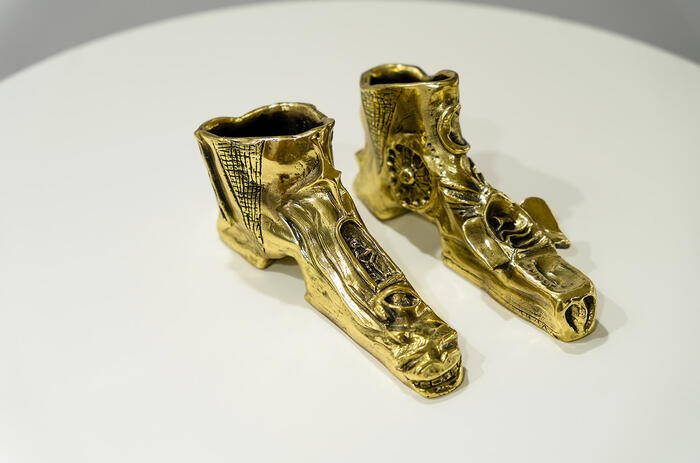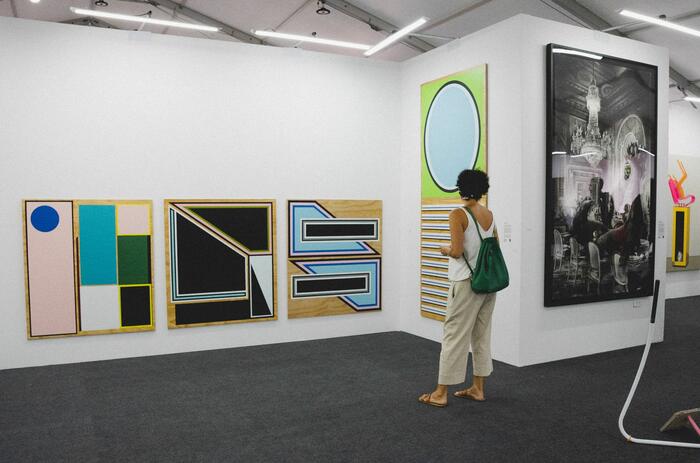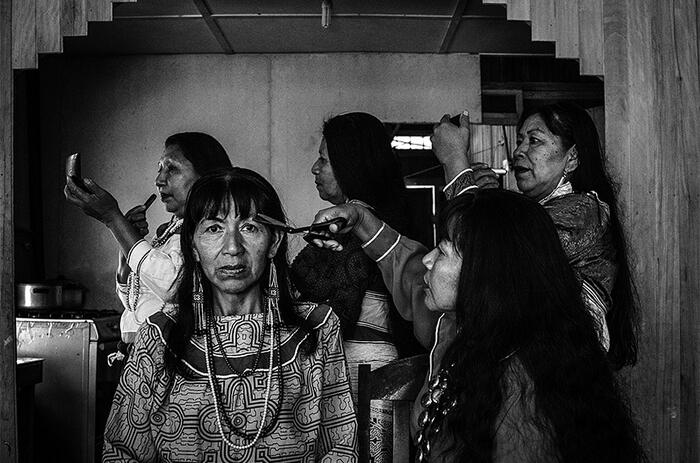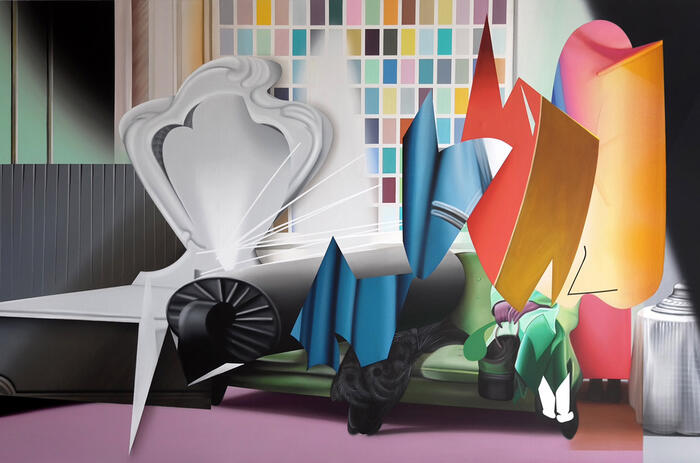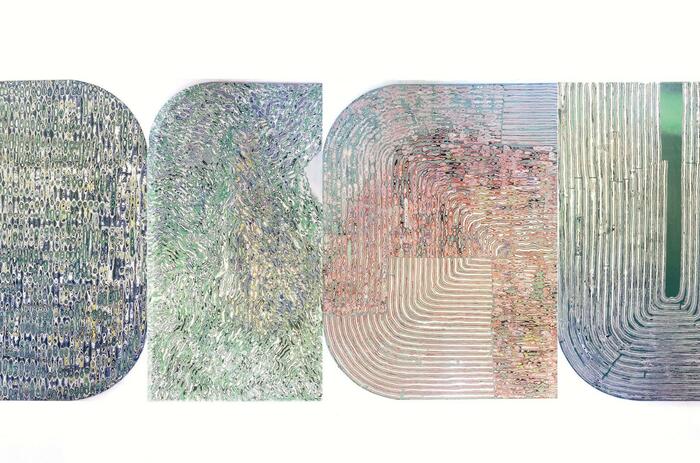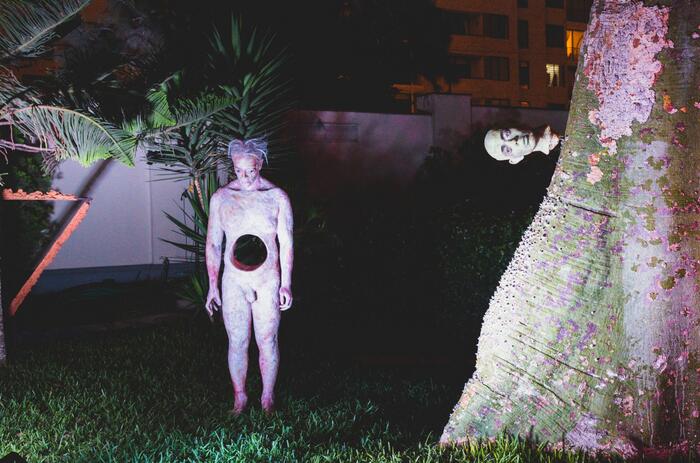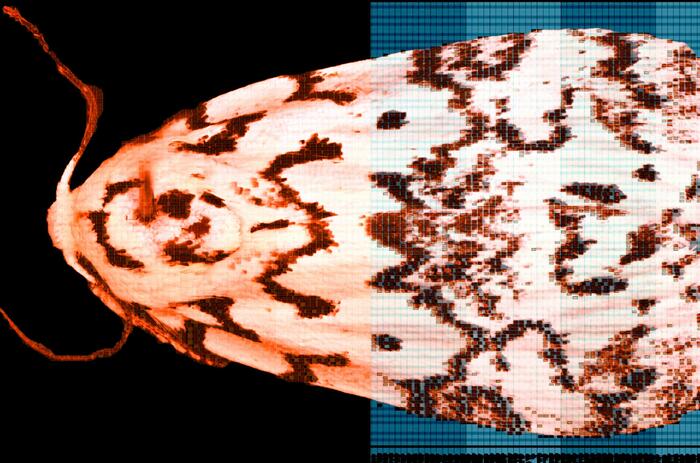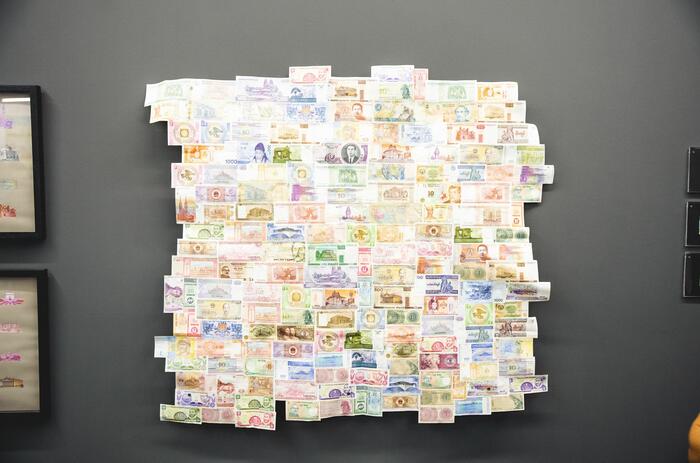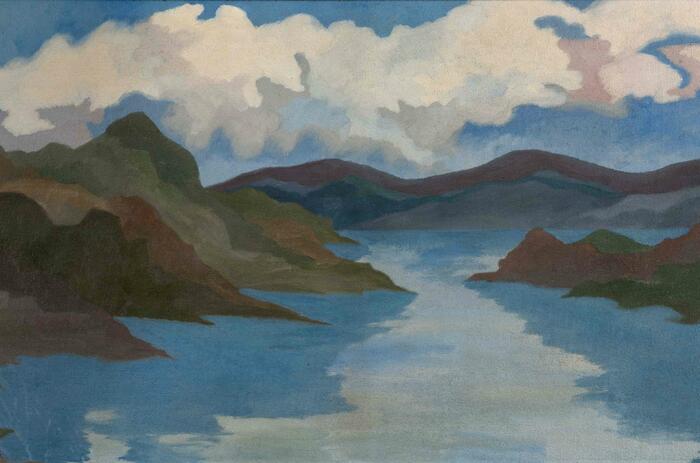AMAZON COSMOLOGY IN PERU'S CONTEMPORARY ART – THE AMAZONÍA SECTION AT PINTA PArC
In its tenth edition, Pinta PArC, Peru Contemporary Art presented the Amazonía section, which exhibits renowned artists from native communities and is curated by Gredna Landolt.
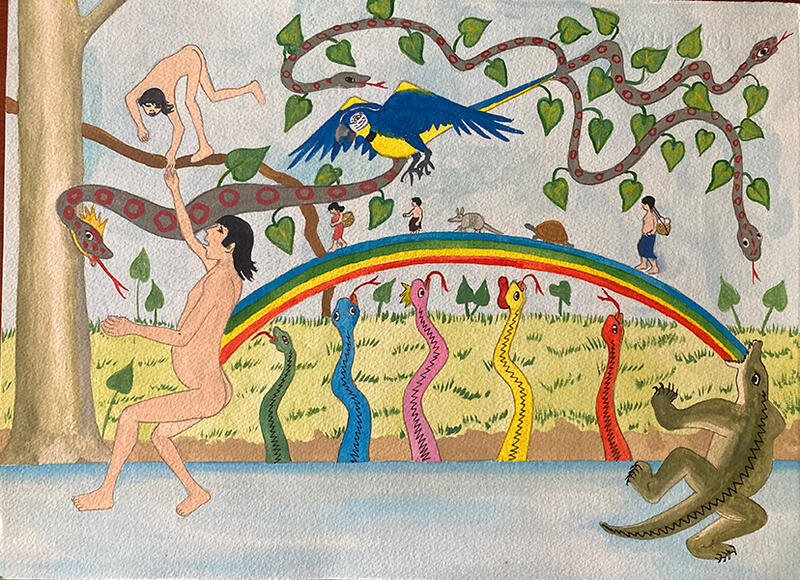
LO QUE LOS OJOS NO VEN (WHAT THE EYES CAN’T SEE)
Amazonian art is one of the most important phenomena of contemporary Peruvian art in the 21st century. Artists from native communities have empowered themselves with Western art supports and techniques to express worlds and cultures that are their own.
The title of this exhibition refers to a common theme: the multiverse inhabited by guardian spirits or "mothers" that protect natural species from being depredated or harmed, as well as other spirits that dwell in different spheres or spaces that they consider part of the world. They cannot be seen with the naked eye, but they manifest themselves in different ways: either spontaneously, under different appearances, or through the ingestion of ayahuasca or other plants considered sacred, which are used to heal people and "open the vision". These beings relate to humans, mate with them or intervene in their lives; they grant or withhold permission to hunt, fish or cut down trees. They play a key role in the balance of species.
The artists belong to various native Amazonian tribes, are from different generations, and use different media. Santiago Yahuarcani, notable artist of the Aimeni people represented by the Crisis gallery, exhibits "Shaman's flight suit", a painting done with natural dyes over vegetable bark or llanchama. It shows a shaman dressed with tiger, eagle, centipede, ray fish and snake skin –animals of “strong blood”– to protect himself and be able to make spiritual fights or heal the sick.
-
Brus Rubio, Danza de la Abeja, 2023
acrílico sobre lienzo, 50 x 40 cm
Cortesía del artista, Shipibo-Conibo Center, NY
-
David Díaz, Corte de cerquillo 60 x 75 cm
-
Lastenia Canayo / Créditos David Díaz
-
Elena Valera / Créditos David Díaz.
-
David Díaz, Mujeres con bebe con tablilla en la frente, 121 x 180 cm
-
David Díaz, El chamán Ruperto Fasabi esparce el humo de mapacho sobre la cabeza de un joven shipibo, Yarinacocha, Pucallpa-2021
-
G. Petsaín -L. Searles 30 x 42 cm
-
G. Petsaín -L. Searles 30 x 42 cm
-
G. Persaín- L.Searles 21x30 cm
Dimas Paredes’ work –a disciple of Pablo Amaringo (founder of the visionary Usko Ayar school of Puallpa)– is entitled “The protection of the World”. There, the purahua –beings that inhabit the cochas or lagoons, whose ferocity can destroy the world– are mixed with characters from the artist’s own mythology, such as the Goddess of the Universe, who has the power to save it.
One of the works by Roldán Pinedo (Shoyan Shëca) and Elena Valera (Bahuan Jisbë) –renowned Shipibo painters who alternate their work between the use of colored earth and natural dyes with acrylics– is about the beings that rule in the water space. Meanwhile, Lastenia Canayo represents in her paintings –as well as in figures carved by her son Wilmer Silvano– the guardian spirits of the plants. Awajún artist Gerardo Petsaín participates with delicate drawings, some in collaboration with Leslie Searles, made in Santa María de Nieva. Talented artists such as Celia Vasquez and her daughter Diana Ruiz, Chonon Bensho and Brus Rubio, with very powerful and original work, are now represented by the Shipibo-Conibo Center in New York. The work of Rember Yahuarcani, with a singular style, is being exhibited around the world, while young artists such as Frank Soria and photographer David Diaz, are quickly beginning to stand out in the art world.
Awajún pottery, with a very contemporary aesthetic, is part of this exhibition thanks to Irma Tuesta, who has been working for many years with the women of the communities of the Comaina and Cenepa rivers in Amazonas, where she comes from. The ceramists turn to Nunkui –"mother" of the earth and the fruits of the farm– so that the pots are beautiful and well-done. Martín Ccorisapra's Shipibo pottery collection is the most important of its kind. On display are joni chomos (anthropomorphic pitchers) and mahuetás (jars) from the communities of the Pisqui and Caco rivers. Their beautiful kené or designs have the particularity of being unique, and there is still no certainty about their enigmatic origin. For some of the compositions, they get inspiration in the mythical skin of Ronin, the primordial boa; for others, in the luminous vibrations generated by the intake of ayahuasca or in the constellations or "paths of the sky".
"What eyes can’t see" is also an invitation to unveil all the richness that Amazonian indigenous art contains and that is not perceived with the naked eye.
We are facing art that is alive, that is increasingly gaining a prominent presence in contemporary art, and will continue to surprise us.
-
G. Petsaín - L. Searles 28 x 38,5 cm
-
Chonon Bensho, Mashá (la danza circular), 2023
Bordado sobre tocuyo, 132 x 191 cm
Cortesía de la artista, Shipibo-Conibo Center, NY
-
Santiago Yahuarcani . “Traje de vuelo de chamán”.
Crédito de la imagen: Juan Pablo Murrugarra.
Cortesía de CRISIS Galería y el artista.
-
Celia Vasquez, Lagarto.
-
Lastenia Canayo, Dueño del Pepino,60 cm
-
Roldán Pinedo (Shoyan Shëca) “Espíritu guardián de la catahua”, acrilico industrial sobre lienzo,150 x 85 cm, 2023.
Participating artists:
Chonon Bensho, Lastenia Canayo, David Díaz, Dimas Paredes, Gerardo Petsaín, Brus Rubio Churay, Roldán Pinedo (Shoyan Shëca), Wilmer Silvano, Frank Soria, Elena Valera (Bahuan Jisbë), Celia Vásquez and her daughter Diana Ruiz, Santiago and Rember Yahuarcani. Also, Awajún potters will participate such as Julia Apikai, Luzmila and Virginia Kajekui, Ofemia Mujat and Margarita Tinchu; and Shipibo ceramists like Florencia Flores Flores, Gloria Amasifuén and Delia Rengifo Cauper, among others included in the Martín Ccorisapra collection.

